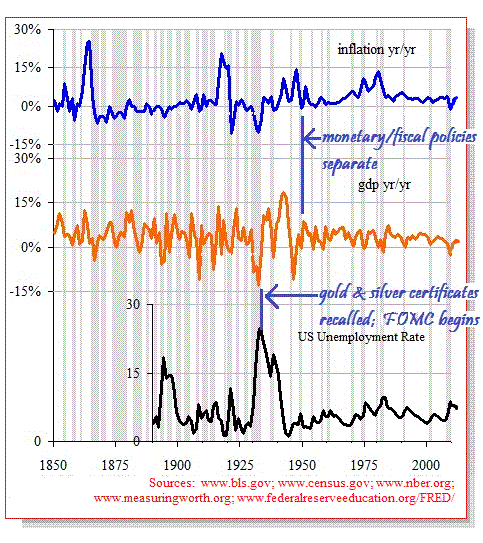Kimura
VIP Member
- Thread starter
- #21
There is a difference between currency and money in today's system. Issuing paper money is fine when it has the full backing of an actual store of value.
Many people, mostly gold bugs, seem unnerved that modern money isn't back anything, such as gold, for instance. They tend to think that this makes modern money a less reliable "store of value". Sure, it's completely logical to assume that a mismanaged monetary system, or a scenario like an oil-price shock, can cause inflation. But the VAST majority of these people don't understand the other side of the spectrum. Under the gold standard, and as a direct of the gold standard, the world went through 8 different deflationary periods severe enough to be called depressions. Once we abolished the gold standard, we can haven't had of these any of these deflationary scenarios, which isn't coincidence.



